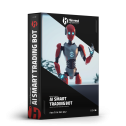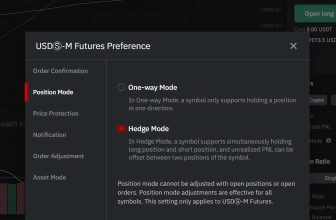In the world of finance, spot trading refers to the practice of buying and selling assets, such as cryptocurrencies, forex, or stocks, at the current market price. The term “spot” originates from the notion that transactions are settled on the spot, meaning that the trade is completed immediately or within a short period. But what exactly is spot trading, and how does it work in different markets?
In this article, we’ll explore the basics of spot trading, its advantages, and the role of trading bots like Hinvest.ai in the process.
Introduction
Spot trading is a term used in financial markets that refers to purchasing or selling a financial instrument intending to settle the transaction within a short period. Unlike futures or options trading, spot trading involves the exchange of the underlying asset at the current market price.
Spot trading is popular in different markets, including crypto, forex, and stock markets. This type of trading offers several advantages, such as quick settlement times and lower fees, but also has some disadvantages, such as high volatility and risk.
In recent years, advancements in technology have led to the development of spot trading bots, such as Hinvest.ai. These bots use algorithms and machine learning to analyze market data and make trading decisions, allowing traders to automate their trading strategies and make more informed decisions.
What is Spot Trading?
Spot trading refers to buying or selling financial instruments, such as cryptocurrencies, currencies, and stocks, intending to settle the transaction within a short period, usually within two business days. The term “spot” comes from the trade being settled on the spot at the current market price.
Spot trading differs from futures or options trading, which involves a contract between two parties to buy or sell an asset at a specific price and date in the future. Spot trading also differs from margin trading, which involves borrowing funds to trade assets.
In spot trading, the buyer and seller agree on the price of the asset and settle the transaction by exchanging the underlying asset and the payment. The settlement process usually takes two business days, although some markets may have different settlement periods.
How Does Spot Trading Work?
Spot trading works by matching buyers and sellers of a financial instrument in the market. Buyers place orders to buy a financial instrument at a specific price, while sellers place orders to sell at a specific price. When a buyer’s bid price matches a seller’s ask price, a trade is executed, and the asset is exchanged for the agreed-upon price.
Spot trading can be done through different channels, such as exchanges, brokers, or over-the-counter (OTC) markets. Exchanges are centralized platforms that match buyers and sellers and facilitate the exchange of assets. Brokers act as intermediaries between buyers and sellers and execute trades on their behalf. OTC markets are decentralized markets where buyers and sellers negotiate and settle trades directly.
Spot Trading in Different Markets
Spot Trading in Crypto
Spot trading is one of the most popular types of trading in the cryptocurrency market. Cryptocurrencies are decentralized digital assets that can be traded on exchanges or OTC markets. Spot trading in the crypto market involves buying or selling cryptocurrencies at the current market price.
The crypto market is highly volatile, and spot trading can be risky, as prices can fluctuate rapidly. However, spot trading in crypto also offers several advantages, such as low fees and quick settlement times.
Spot Trading in Forex
Forex, or foreign exchange, is the market where currencies are traded. Spot trading in forex involves buying or selling currencies at the current exchange rate. The forex market is the largest financial market in the world and operates 24 hours a day, five days a week.
Spot trading in forex is popular among traders who want to take advantage of short-term price movements in currency pairs. The forex market is also highly liquid, making it easy to buy or sell currencies at the current market price.
Spot Trading in Stock Markets
Spot trading in stock markets involves buying or selling stocks at the current market price. Stocks represent ownership in a company, and their price can fluctuate based on the company’s performance, economic conditions, and other factors.
Spot trading in stock markets is popular among traders who want to take advantage of short-term price movements in stocks. The stock market is also highly regulated and offers transparency and liquidity to traders.
Advantages and Disadvantages
Advantages of Spot Trading
Spot trading offers several advantages, such as:
- Quick settlement times: Spot trading involves settling the transaction within a short period, usually within two business days.
- Lower fees: Spot trading usually involves lower fees than other trading types, such as futures or options trading.
- Transparency: Spot trading offers transparency as buyers and sellers agree on the asset’s price and settle the transaction by exchanging the underlying asset and payment.
Disadvantages of Spot Trading
Spot trading also has some disadvantages, such as:
- High volatility: Spot trading can be risky as prices can fluctuate rapidly, especially in the crypto market.
- Risk: Spot trading involves a higher risk than other trading types, such as long-term investing.
- Limited profit potential: Spot trading offers limited profit potential as traders can only make a profit based on short-term price movements.
Spot Trading vs. Futures Trading
Spot trading and futures trading are two distinct methods of trading assets. While spot trading involves the immediate exchange of assets at their current market prices, futures trading involves the buying and selling of contracts that represent an agreement to exchange an asset at a predetermined price on a future date. Although both methods have their advantages, spot trading offers more transparency, flexibility, and lower costs, while futures trading allows for better risk management and hedging strategies.
Definition and Key Differences
- Spot Trading
- Involves the immediate exchange of assets at their current market prices.
- Trades are settled within a short period, often within two business days for forex or faster for cryptocurrencies.
- More suitable for short-term trading strategies.
- Futures Trading
- Involves the buying and selling of contracts that represent an agreement to exchange an asset at a predetermined price on a future date.
- Trades are settled on a specified date in the future.
- More suitable for long-term trading strategies and hedging purposes.
Benefits of Spot Trading
- Transparency: Spot trading offers real-time pricing and accurate market data, allowing traders to make informed decisions.
- Flexibility: Traders can execute spot trades anytime during market hours, providing more control over their positions.
- Lower Costs: Transaction costs in spot trading are generally lower compared to futures trading.
- Instant Execution: Spot trades are executed almost immediately, allowing traders to capitalize on short-term market movements.
Benefits of Futures Trading
- Risk Management: Futures trading enables traders to manage risks more effectively through the use of contracts that lock in prices for future delivery.
- Hedging Strategies: Traders can use futures contracts to hedge against potential adverse price movements in the underlying asset.
- Leverage: Futures trading often allows for greater leverage, which can amplify both gains and losses.
- Price Discovery: Futures markets provide a platform for price discovery, contributing to more efficient markets.
Spot Trading vs. Futures Trading: Choosing the Right Approach
When deciding between spot and futures trading, traders should consider their individual goals, risk tolerance, and trading strategies. Spot trading may be more suitable for those who prefer short-term trading and want to capitalize on market movements quickly. In contrast, futures trading can be a better fit for traders looking to hedge against risk or engage in long-term trading strategies. Ultimately, the choice between spot and futures trading depends on the trader’s unique needs and preferences.
Spot Trading Strategies
Technical Analysis
Technical analysis is a popular trading strategy used by spot traders to analyze historical price data and identify trends, patterns, and potential entry and exit points. This approach relies on the belief that past price movements can provide insights into future price trends.
Fundamental Analysis
Fundamental analysis is another common strategy for spot trading, where traders evaluate an asset’s intrinsic value based on factors such as financial statements, economic indicators, and market conditions. By determining the underlying value of an asset, traders can identify potentially undervalued or overvalued assets and make informed trading decisions.
Spot Trading Bots
Introduction to Trading Bots
Trading bots are automated software programs that execute trades based on predefined algorithms and criteria. These bots can be useful for spot trading, as they can monitor markets around the clock, process vast amounts of data quickly, and execute trades without being influenced by emotions.
Hinvest.ai: An AI Crypto Trading Bot
Hinvest.ai is an AI-powered crypto trading bot that aims to optimize trading strategies and maximize profits in the highly volatile cryptocurrency market.
By using advanced machine learning algorithms, Hinvest.ai can analyze market trends, identify trading opportunities, and execute trades automatically on behalf of the user.
This allows traders to save time, reduce stress, and potentially achieve better returns on their investments.
AI Smart Trading Bot Special Bot
Conclusion
FAQs
What is spot trading?
Spot trading refers to buying or selling financial instruments at the current market price with the intention of settling the transaction within a short period.
What are the advantages of spot trading?
Spot trading offers several advantages, such as quick settlement times, lower fees, and transparency.
What are the disadvantages of spot trading?
Spot trading has some disadvantages, such as high volatility, risk, and limited profit potential.
What is a spot trading bot?
A spot trading bot is a software program that uses algorithms and machine learning to analyze market data and make trading decisions automatically.







